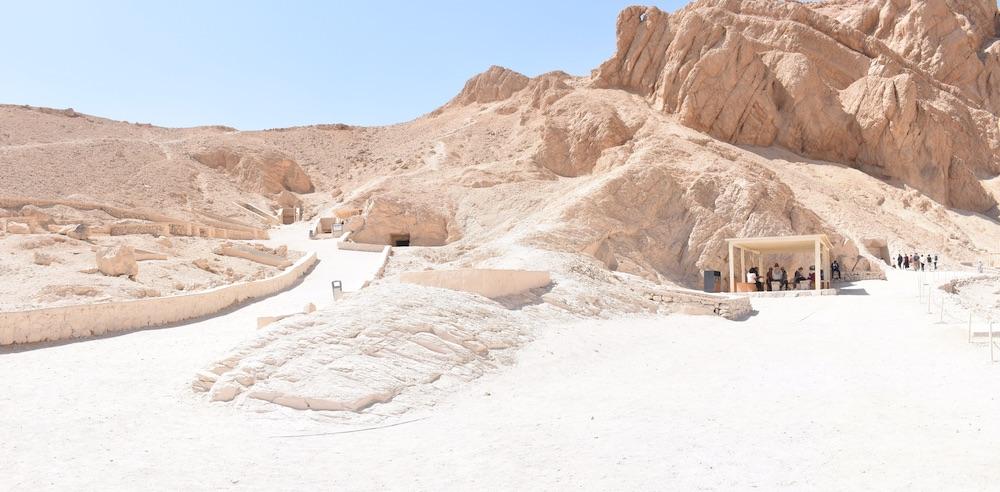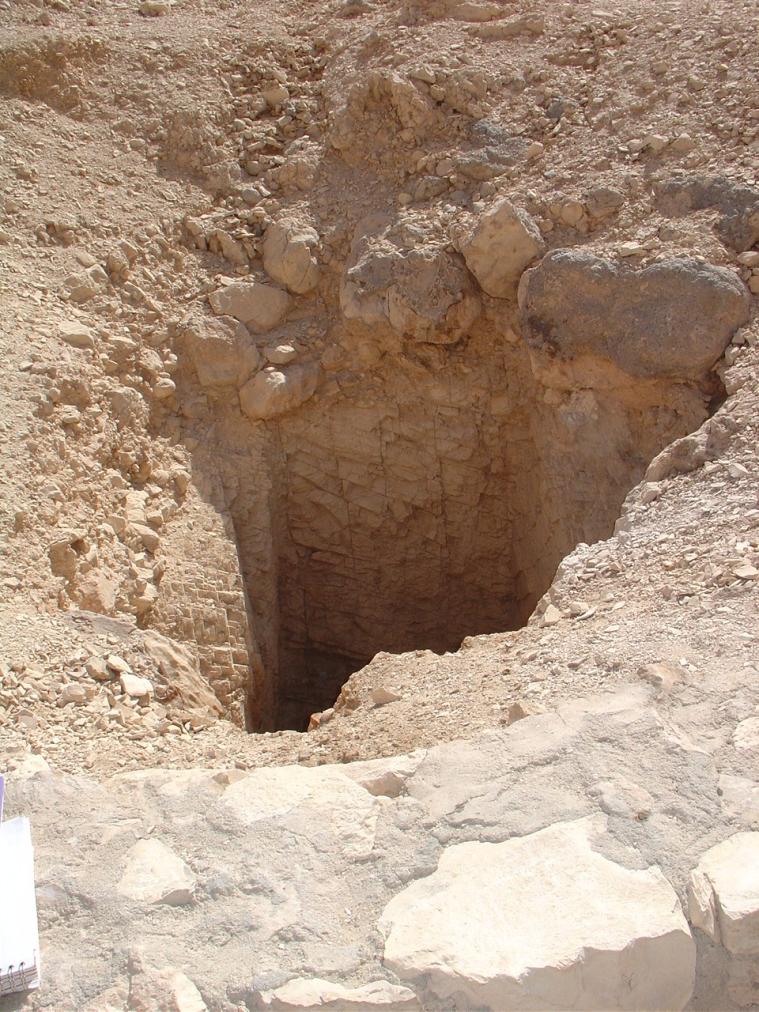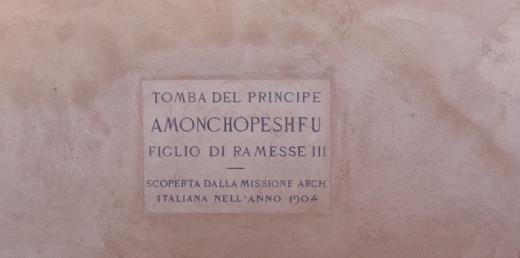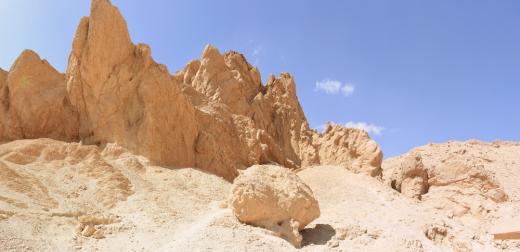QV 39
Anonymous*
About
About
QV 39 is located halfway up the southwest branch of the main Wadi, adjacent to the main pathway and retaining wall. It is nestled between tombs QV 38 and QV 40. The tomb has a deep shaft and two chambers, both of which are blackened.
Elizabeth Thomas records this tomb as the westernmost shaft tomb and one of the largest with multiple chambers. She found the tomb thoroughly blackened and filled with mummies. She further suggests that this could have been the tomb of Prince Wadimose or another royal of the 18th Dynasty, whose tutor was Imhotep, interred in nearby QV 46. Based on the archaeological material recovered by the Franco-Egyptian Mission, the tomb was reused during the Roman Period.
Site History
The tomb was constructed in the 18th Dynasty and reused in the Roman Period.
Dating
This site was used during the following period(s):
Exploration
Conservation
Conservation History
Trash littering the shaft was removed in 2007. In December 2009, the SCA installed a modern masonry surround with metal grill.
Site Condition
According to the GCI-SCA, the tomb appears structurally stable and in good condition, having been cut into good quality marl similar to that found in adjacent QV 38 and QV 40. A large number of bats was observed roosting in the tomb by the GCI-SCA assessment team in February 2008. The shaft entrance is susceptible to floodwaters and upslope runoff.



Articles
Tomb Numbering Systems in the Valley of the Queens and the Western Wadis
Geography and Geology of the Valley of the Queens and Western Wadis
Bibliography
CNRS mission report: Centre national de la recherche scientifique (France). Rapport d'activité 1987-1988 URA no. 1064, 1987-1988.
Demas, Martha and Neville Agnew (eds). Valley of the Queens. Assessment Report. Los Angeles: The Getty Conservation Institute, 2012, 2016. Two vols.
Macke, André, Christiane Macke-Ribet, Christian Leblanc, and Jacques Connan. Ta set neferou: une necropole de Thebes-Ouest et son histoire: momification, chimie des baumes, anthropologie, paléopathologie. Vol. 5. Cairo: Nubar Printing House, 2002.
Thomas, Elizabeth. The Royal Necropoleis of Thebes. Princeton: privately printed, 1966.





